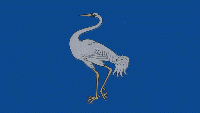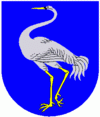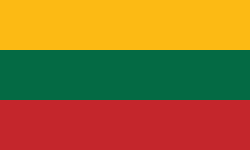Visaginas
 |
 |
The administrative centre of Visaginas municipality is situated near the country's biggest lake, Drūkšiai. Its administrative boundaries are in the process of being defined. The Vilnius–Daugavpils railway runs alongside the town, providing convenient communication with those cities. Motorways connect the town with all other cities in the republic.
In the distant past, the surroundings of Visaginas were inhabited by the Selonians. Historical annals first mention the location in 1526, when it was presented by the nobleman Vaitiekus Goštautas to the Naujasis (New) Daugėliškis parish. In the 14th–19th centuries the region was invaded by the Livonian, Swedish, Russian and French troops.
Before World War II, from 1922 to 1939, the area of modern Visaginas lay within the boundaries of the Gmina Smołwy in the Brasław County of the Wilno Voivodeship in Poland.
The settlement was founded in 1975 as Sniečkus, a town for workers at the Ignalina Nuclear Power Plant on the shores of Lake Visaginas. It was established in place of four villages that were demolished, the largest of which was known as Visaginas. The new town was named after Antanas Sniečkus, a former first secretary of the Lithuanian Communist Party, and was granted the status of an urban-type settlement. Following the restoration of independence, the city was renamed to Visaginas in 1992 and received municipal rights in 1995. It is governed by a town council, which elects the mayor. In 1996, the city's coat of arms was confirmed by a decree of the President of Lithuania.
The settlement was developed in complexes, with construction designed to create an infrastructure for the cultural and everyday life of the residents. Efforts were made to preserve the natural surroundings as much as possible.
Map - Visaginas
Map
Country - Lithuanian_Soviet_Socialist_Republic_(1918–1919)
 |
 |
| Flag of Lithuania | |
Germany had lost World War I and signed the Compiègne Armistice on 11 November 1918. Its military forces then started retreating from the former Ober Ost territories. Two days later, the government of the Soviet Russia renounced the Treaty of Brest-Litovsk, which had assured Lithuania's independence. Soviet forces then launched a westward offensive against Estonia, Latvia, Lithuania, Poland and Ukraine in an effort to spread the global proletarian revolution and replace national independence movements with Soviet republics. Their forces followed retreating German troops and reached Lithuania by the end of December 1918.
Currency / Language
| ISO | Currency | Symbol | Significant figures |
|---|---|---|---|
| EUR | Euro | € | 2 |
| ISO | Language |
|---|---|
| LT | Lithuanian language |
| PL | Polish language |
| RU | Russian language |















